There are any number of ways to get this to work, depending on what it is you want to achieve.
This first example simply uses the 2D Graphics API to render the cells and a MouseMotionListener to monitor which cell is highlighted.

import java.awt.BorderLayout;
import java.awt.Color;
import java.awt.Dimension;
import java.awt.EventQueue;
import java.awt.Graphics;
import java.awt.Graphics2D;
import java.awt.Point;
import java.awt.Rectangle;
import java.awt.event.MouseAdapter;
import java.awt.event.MouseEvent;
import java.util.ArrayList;
import java.util.List;
import javax.swing.JFrame;
import javax.swing.JPanel;
import javax.swing.UIManager;
import javax.swing.UnsupportedLookAndFeelException;
public class TestGrid01 {
public static void main(String[] args) {
new TestGrid01();
}
public TestGrid01() {
EventQueue.invokeLater(new Runnable() {
@Override
public void run() {
try {
UIManager.setLookAndFeel(UIManager.getSystemLookAndFeelClassName());
} catch (ClassNotFoundException | InstantiationException | IllegalAccessException | UnsupportedLookAndFeelException ex) {
}
JFrame frame = new JFrame("Testing");
frame.setDefaultCloseOperation(JFrame.EXIT_ON_CLOSE);
frame.setLayout(new BorderLayout());
frame.add(new TestPane());
frame.pack();
frame.setLocationRelativeTo(null);
frame.setVisible(true);
}
});
}
public class TestPane extends JPanel {
private int columnCount = 5;
private int rowCount = 5;
private List<Rectangle> cells;
private Point selectedCell;
public TestPane() {
cells = new ArrayList<>(columnCount * rowCount);
MouseAdapter mouseHandler;
mouseHandler = new MouseAdapter() {
@Override
public void mouseMoved(MouseEvent e) {
Point point = e.getPoint();
int width = getWidth();
int height = getHeight();
int cellWidth = width / columnCount;
int cellHeight = height / rowCount;
selectedCell = null;
if (e.getX() >= xOffset && e.getY() >= yOffset) {
int column = (e.getX() - xOffset) / cellWidth;
int row = (e.getY() - yOffset) / cellHeight;
if (column >= 0 && row >= 0 && column < columnCount && row < rowCount) {
selectedCell = new Point(column, row);
}
}
repaint();
}
};
addMouseMotionListener(mouseHandler);
}
@Override
public Dimension getPreferredSize() {
return new Dimension(200, 200);
}
@Override
public void invalidate() {
cells.clear();
selectedCell = null;
super.invalidate();
}
@Override
protected void paintComponent(Graphics g) {
super.paintComponent(g);
Graphics2D g2d = (Graphics2D) g.create();
int width = getWidth();
int height = getHeight();
int cellWidth = width / columnCount;
int cellHeight = height / rowCount;
int xOffset = (width - (columnCount * cellWidth)) / 2;
int yOffset = (height - (rowCount * cellHeight)) / 2;
if (cells.isEmpty()) {
for (int row = 0; row < rowCount; row++) {
for (int col = 0; col < columnCount; col++) {
Rectangle cell = new Rectangle(
xOffset + (col * cellWidth),
yOffset + (row * cellHeight),
cellWidth,
cellHeight);
cells.add(cell);
}
}
}
if (selectedCell != null) {
int index = selectedCell.x + (selectedCell.y * columnCount);
Rectangle cell = cells.get(index);
g2d.setColor(Color.BLUE);
g2d.fill(cell);
}
g2d.setColor(Color.GRAY);
for (Rectangle cell : cells) {
g2d.draw(cell);
}
g2d.dispose();
}
}
}
This example does resize the grid with the window, but it would be a trivial change to make the cells fixed size.
Check out 2D Graphics for more details
Update with component example
This example uses a series of JPanels to represent each cell.
Each cell is defined with a fixed width and height and do not resize with the main window.

In this example, each cell panel has it's own mouse listener. It wouldn't be overly difficult to re-code it so that the main panel had a single mouse listener and managed the work load itself instead.
import java.awt.BorderLayout;
import java.awt.Color;
import java.awt.Dimension;
import java.awt.EventQueue;
import java.awt.GridBagConstraints;
import java.awt.GridBagLayout;
import java.awt.event.MouseAdapter;
import java.awt.event.MouseEvent;
import javax.swing.JFrame;
import javax.swing.JPanel;
import javax.swing.UIManager;
import javax.swing.UnsupportedLookAndFeelException;
import javax.swing.border.Border;
import javax.swing.border.MatteBorder;
public class TestGrid02 {
public static void main(String[] args) {
new TestGrid02();
}
public TestGrid02() {
EventQueue.invokeLater(new Runnable() {
@Override
public void run() {
try {
UIManager.setLookAndFeel(UIManager.getSystemLookAndFeelClassName());
} catch (ClassNotFoundException | InstantiationException | IllegalAccessException | UnsupportedLookAndFeelException ex) {
}
JFrame frame = new JFrame("Testing");
frame.setDefaultCloseOperation(JFrame.EXIT_ON_CLOSE);
frame.setLayout(new BorderLayout());
frame.add(new TestPane());
frame.pack();
frame.setLocationRelativeTo(null);
frame.setVisible(true);
}
});
}
public class TestPane extends JPanel {
public TestPane() {
setLayout(new GridBagLayout());
GridBagConstraints gbc = new GridBagConstraints();
for (int row = 0; row < 5; row++) {
for (int col = 0; col < 5; col++) {
gbc.gridx = col;
gbc.gridy = row;
CellPane cellPane = new CellPane();
Border border = null;
if (row < 4) {
if (col < 4) {
border = new MatteBorder(1, 1, 0, 0, Color.GRAY);
} else {
border = new MatteBorder(1, 1, 0, 1, Color.GRAY);
}
} else {
if (col < 4) {
border = new MatteBorder(1, 1, 1, 0, Color.GRAY);
} else {
border = new MatteBorder(1, 1, 1, 1, Color.GRAY);
}
}
cellPane.setBorder(border);
add(cellPane, gbc);
}
}
}
}
public class CellPane extends JPanel {
private Color defaultBackground;
public CellPane() {
addMouseListener(new MouseAdapter() {
@Override
public void mouseEntered(MouseEvent e) {
defaultBackground = getBackground();
setBackground(Color.BLUE);
}
@Override
public void mouseExited(MouseEvent e) {
setBackground(defaultBackground);
}
});
}
@Override
public Dimension getPreferredSize() {
return new Dimension(50, 50);
}
}
}

